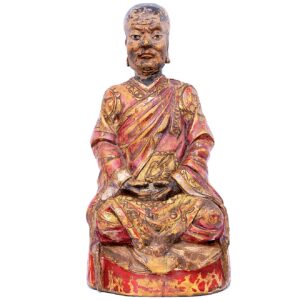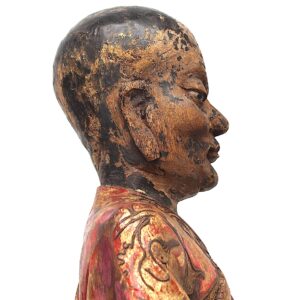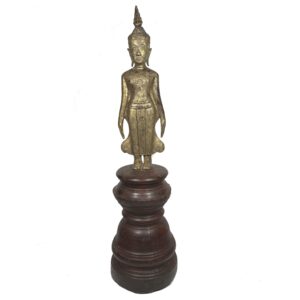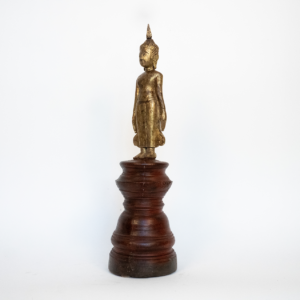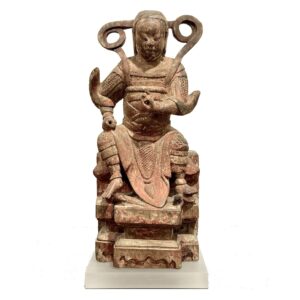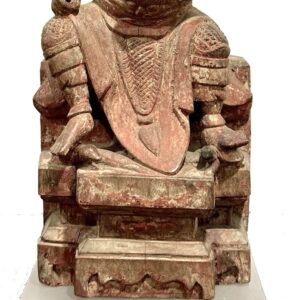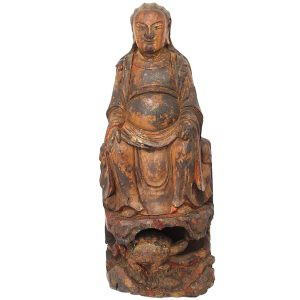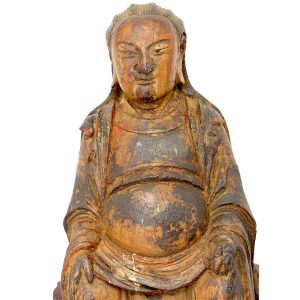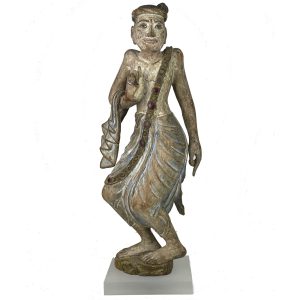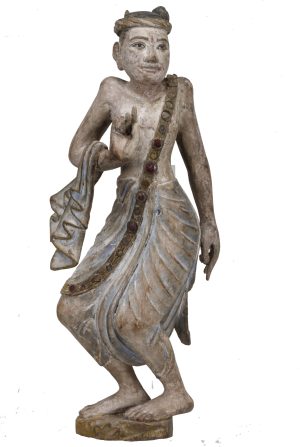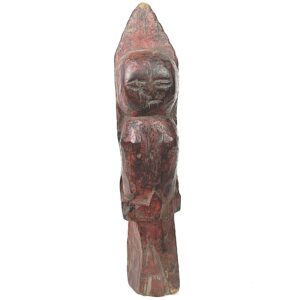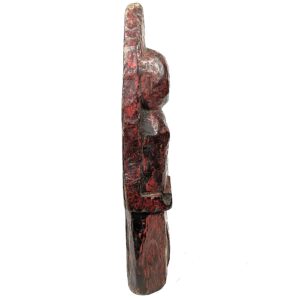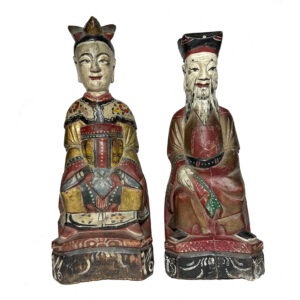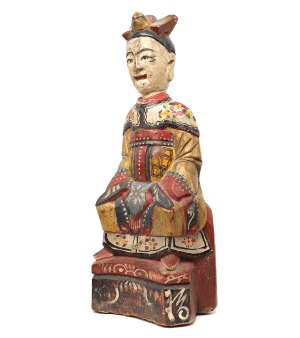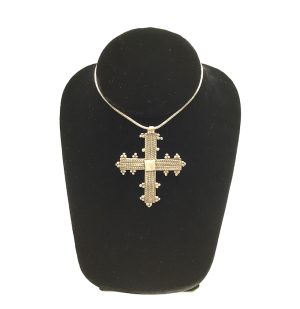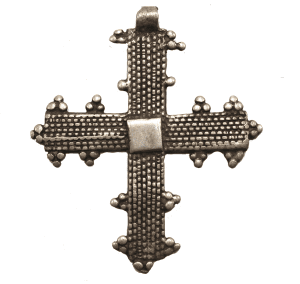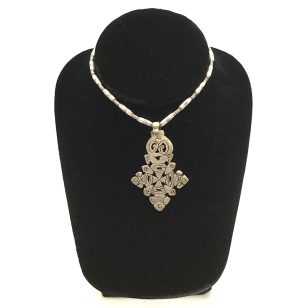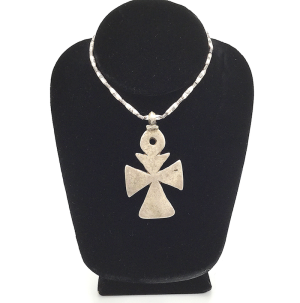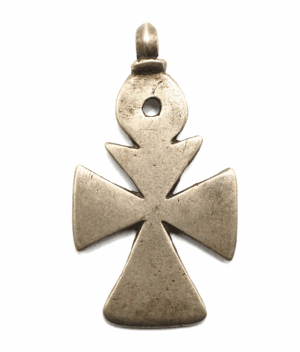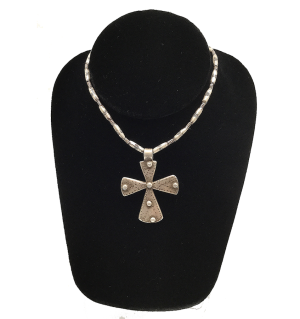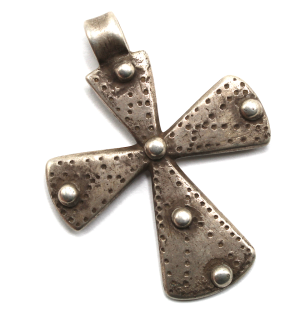Showing 193–204 of 430 results
-


$785.00
18 original Lohans were the major disciples of Shakyamuni Buddha whom he, at his death bed, entrusted to protect and promulgate Buddhist teachings. Over centuries, their numbers increased to over 500 enlightened beings recognized for their courage and supernatural powers. In Mahayana Buddhism, Lohans represent the ideal toward which Buddhist devotees should strive as they…
-


$195.00
H: 5.25″ W: 4.5″ D: 2.875″ | FREE SHIPPING WITHIN CONTINENTAL U.S.!
This 19th-century miniature wood figure is a finely and whimsically carved portly seated merchant. He is depicted as a Laowai or “old foreigner” with a westernized face and hat and oversized hands placed on his knees. Seated on a platform base, he wears garments reflective of the Chinese culture at this time but wears a hat that is clearly not of Chinese origin. Other indications this charming figure is a foreigner include the roundness of his face, western facial features and oversized hands.
-


$1,575.00
H: 24.5” Dia: 7″ | CALL 213-568-3030 FOR SHIPPING quote or email [email protected]
Lao carved Buddha statues are renowned for their delicacy and refinement. This elegant antique Buddha is depicted in the “Calling for Rain” mudra found only in Laos with his half-closed gazing downward in meditation, elegant gestures, lyrical flaring robes and graceful curves of the body reflecting the Buddha’s gentleness. The curvature, proportions and oversized head indicate the perfection, wisdom and compassion of the “Enlightened One. He stands on a multi-tiered circular and waisted base. Carved Laotian images as old and elegant as this are rare.
-
Sale!


$1,250.00 Original price was: $1,250.00.$975.00Current price is: $975.00.
H: 15.25″ W: 6.75″ D: 6.75″ |CALL 213-568-3030 OR EMAIL [email protected] FOR SHIPPING
Zhenwu (Perfected Warrior) one of most important and powerful Taoist deities, is revered for magical powers to suppress demonic forces. Forceful wood provincial image for personal devotion reflecting his iconography: on throne, bare feet resting on snake and tortoise, celestial scarf and maille armor.
-
Sale!


$575.00 Original price was: $575.00.$495.00Current price is: $495.00.
H: 13″ W: 5″ D: 4.8″ | FREE SHIPPING WITHIN CONTINENTAL U.S.
Provincial carving of Zhenwu the Perfected Warrior, one of the most popular Taoist deities in the Ming/Qing dynasties, iconically shown standing on a snake and turtle, symbolizing those over whom he presides.
-
Sale!


$1,350.00 Original price was: $1,350.00.$950.00Current price is: $950.00.
H: 19.75″ W: 7.75″ D: 5″ | FOR SHIPPING QUOTATION CALL US AT 213-568-3030 OR EMAIL [email protected]
This exquisite teak carving of a Mandalay Burmese male dancer wearing a sarong is in a fluid twisted pose emphasizing his strength, balance and grace with his raised hand is in a position similar to a Buddhist mudra. His humble status is reflected his head scarf and a bejeweled sarong with insert glass that reflect light and add movement and depth. His joyful beautiful face stares with open eyes and slightly parted lips It is simply a gorgeous work mounted on a contemporary frosted stand to complement any setting.
-
Sale!


$85.00 Original price was: $85.00.$55.00Current price is: $55.00.
Ht: 9..5 ” W: 2″ D:1.5 ” | FREE SHIPPING WITHIN CONTINENTAL U.S.
Antique carving of a Devi (Sanskrit: divine) probably a child’s toy and and protective item. Tikka on forehead, ample breasts – a wish for fertility with a shiny patina from use.
-
Sale!


$785.00 Original price was: $785.00.$625.00Current price is: $625.00.
H: Tudi Gong: 11.75″. Tudi Po 12.37″ | CALL 213-568-3030 OR EMAIL [email protected] FOR SHIPPING.
This happy benevolent couple are Taoist Earth God Tudi Gong and his wife Tudi Po placed on a home altar to assure an abundant harvest. Referred to as “Grandpa” and “Grand Ma” they wear vibrant Mandarin official’s attire, him with a mandarin square with a bird, and her with a phoenix headdress.
-
Sale!


$175.00 Original price was: $175.00.$150.00Current price is: $150.00.
Ht: 2.563″ W: 2.063″ | FREE SHIPPING WITHIN CONTINENTAL U.S.
Ethiopian Fleury cross with arms ending in 3 pointed lobes representing the Trinity. Coin silver lost wax body centered with a square and embellished with small granulates for a vibrant textured surface.
-
Sale!


$135.00 Original price was: $135.00.$120.00Current price is: $120.00.
H: 2.5” W: 1.625″ | FREE SHIPPING WITHIN CONTINENTAL U.S.
Stylized birds atop this cross artistically and spiritually transform it into the Tree of Life symbolizing the beginning of humanity and end of time, lineage of Ethiopian people to the Queen of Shebas and the wood for the True Cross. Chain necklace not included.
-
Sale!


$175.00 Original price was: $175.00.$150.00Current price is: $150.00.
Ht: 3.125″ W: 1.75″ | FREE SHIPPING WITHIN CONTINENTAL U.S.
Large heavy pendant Cross Pattée is topped with a modification of the Egyptian round ankh. Simple elegance. surmounted on softened by smooth surface and
-
Sale!


$175.00 Original price was: $175.00.$140.00Current price is: $140.00.
Ht: 2.625″ W: 1.625″ | FREE SHIPPING WITHIN CONTINENTAL U.S.
From the Shoa region, this simple but elegant Ethiopian Cross Pattée with flaring arms was made using the lost-wax process and embellished with 6 round protruding bosses and etched dots.
End of content
End of content

